Quesea at your own pace
But Quesea with cheeses from Spain
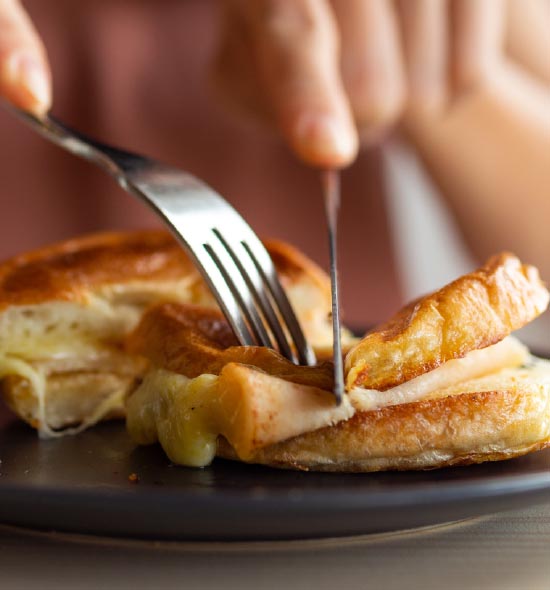

A top food in Spanish gastronomy and a fundamental pillar of the healthy Mediterranean Diet. Cheese is one of those foods that are never missing from the fridge in the home, and which is increasingly gaining a place in haute cuisine. It is a delicatessen food that goes well with a wide range of dishes and drinks.
Fresh, white cheese with external mould or washed rind, cheeses with internal mould, pressed cheese, melted cheeses…. Few countries can boast such a variety of cheeses with or without Protected Designation of Origin (PDO) or Protected Geographical Indication (PGI), from the mildest to the most intense, with different ripening periods. The most important thing is to discover among this wide range of proposals, the cheeses that best suit our tastes and preferences. And also to each meal, time of day, occasion. The pairings are almost infinite.
By the way, don’t forget a good bottle of mineral water (or sparkling water, why not), which will be a great help in the transition between milder and stronger cheeses, together with some bread or “regañás”.
Quesea with beer
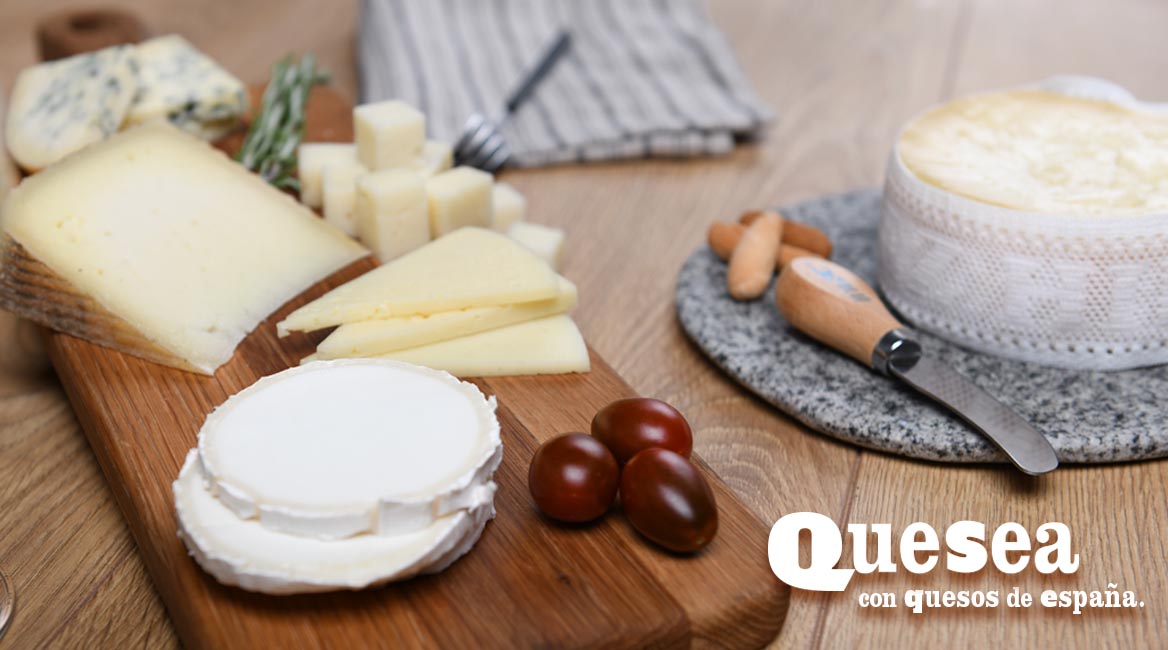
The mild wheat flavour of the beer goes well with soft cheeses such as goat’s cheese.
Quesea with cava
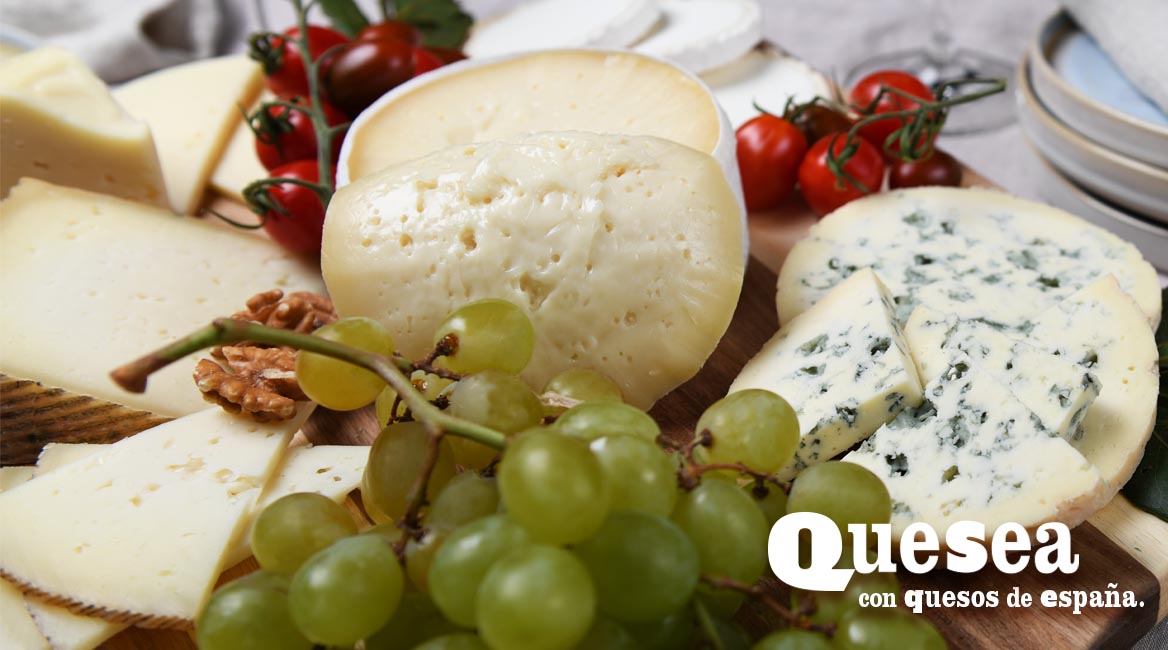
Cava and sparkling wines help you to clean your mouth and enjoy several types of cheese during the same evening, even Manchego, which has traditionally been more associated with red cheeses.
Quesea with wine
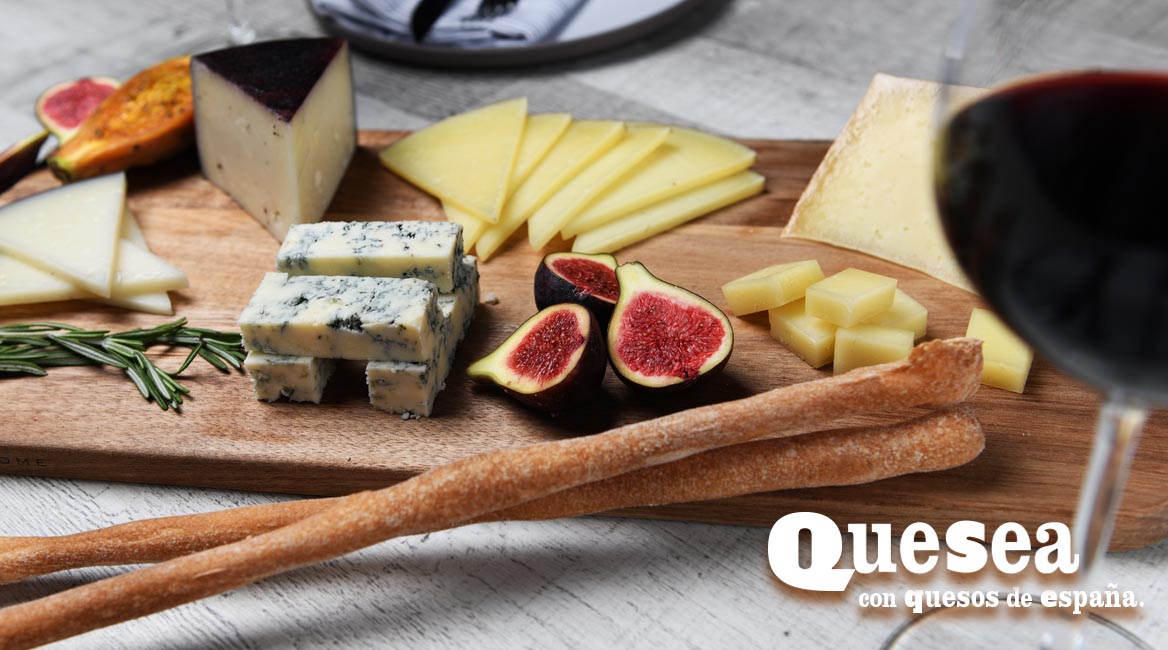
Cheese and wine go very well together due to the tannins in the wine.
The longer the cheeses are aged, the more rounded and gastronomic wines, crianzas and reservas, both white and red, although you can also dare to try the versatile rosés and the always appropriate ‘dessert wines’, such as amontillados, sherries or other ‘sweet wines’.
Even vermouth is perfect for cheeses with personality, with a strong flavour, at the time of the traditional Spanish aperitif.
Quesea with tea or water
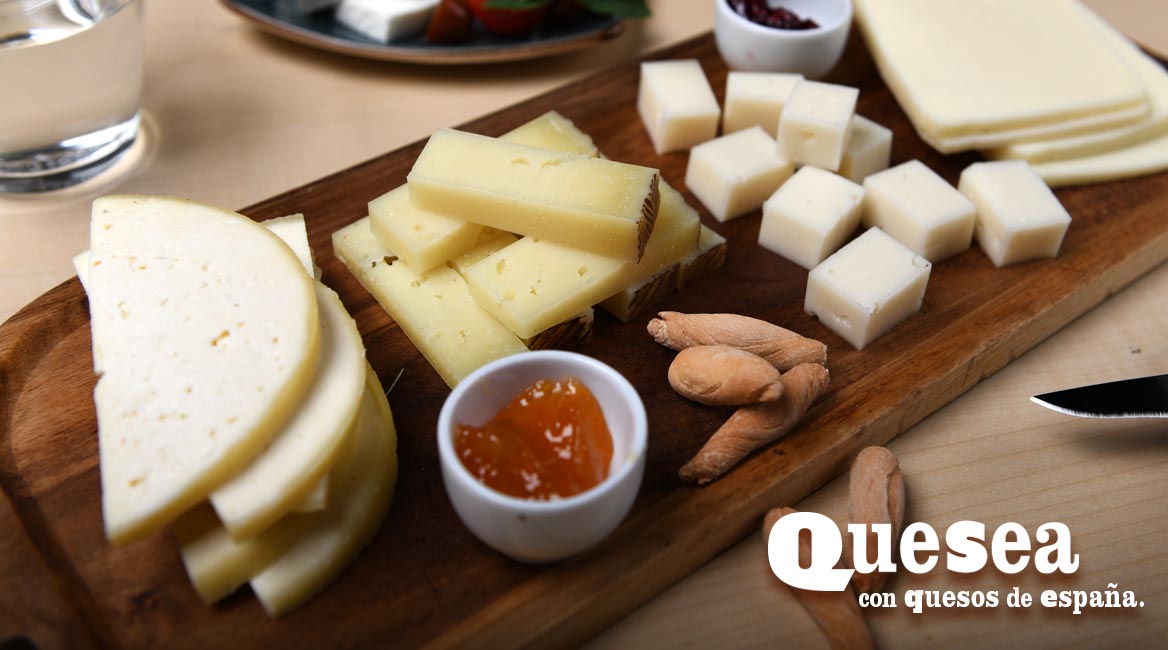
Black tea, puerh tea or oolong tea are also very rich in tannins and enhance the flavour of cheese, similar to what happens with wine.
The temperature of the tea awakens a series of nuances and textures of the cheese that we only perceive when drinking a hot, flavoured beverage like this.
Quesea with quince
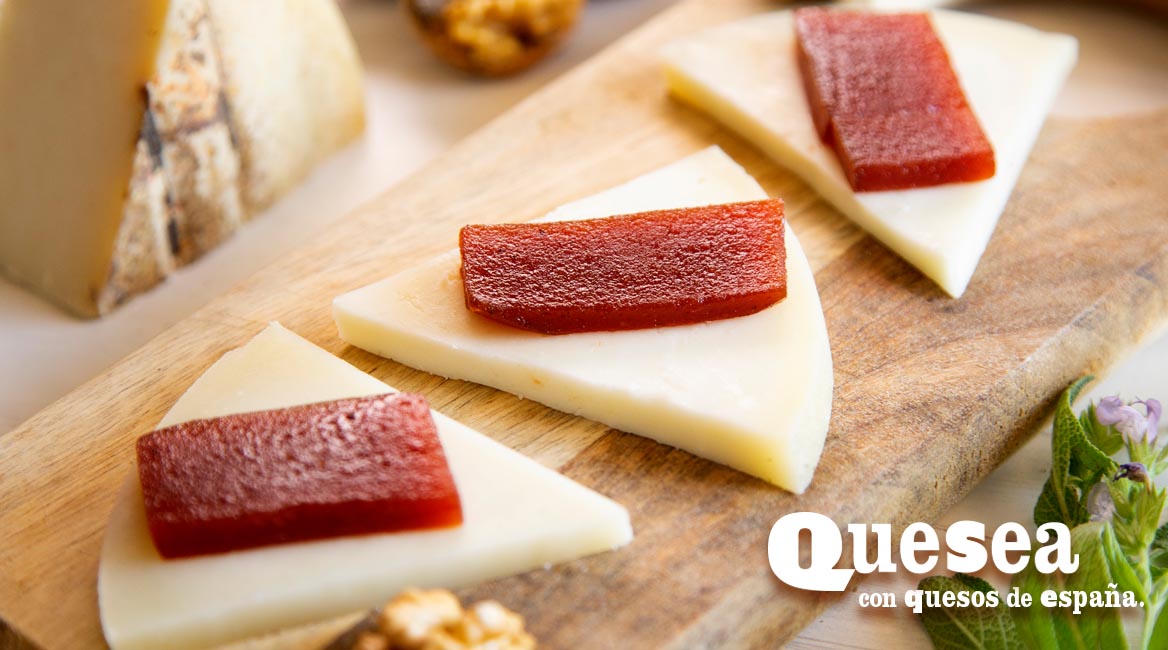
Cheese and sweet quince are always a winning tandem.
There is no better combination of foods. It is appreciated by most palates, even the most demanding and refined.
Quince comes from a tree of Asian origin, although it is already an inseparable part of Spanish gastronomy. Meanwhile, cheese contains minerals and vitamins, always an incentive not to do without nutritious and healthy dairy products.
Quesea with fruit
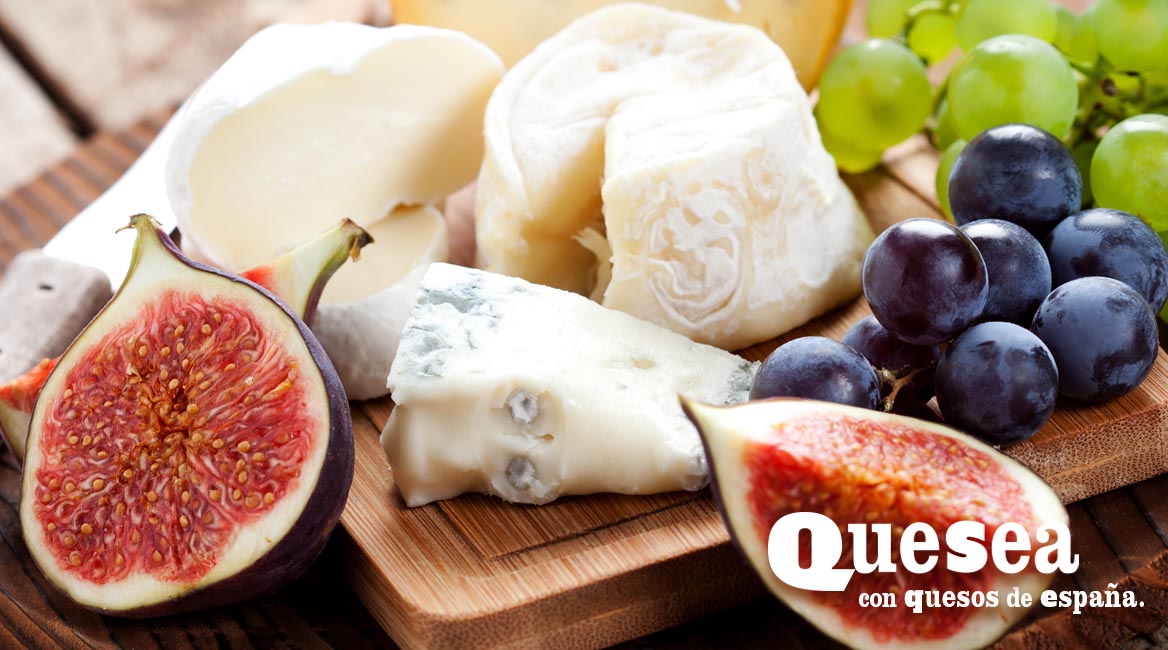
Grapes, apples, figs or strawberries are perfect with cheese. And, especially, the sweeter the fruit, the better they go with semi-cured or cured cheeses.
But, among all the proposals, we always choose ‘grapes’, at least because of the romantic charge that surrounds this ‘aphrodisiac’ combination.
You know what they say ‘grapes and cheese taste like a kiss’.
Quesea with chocolate
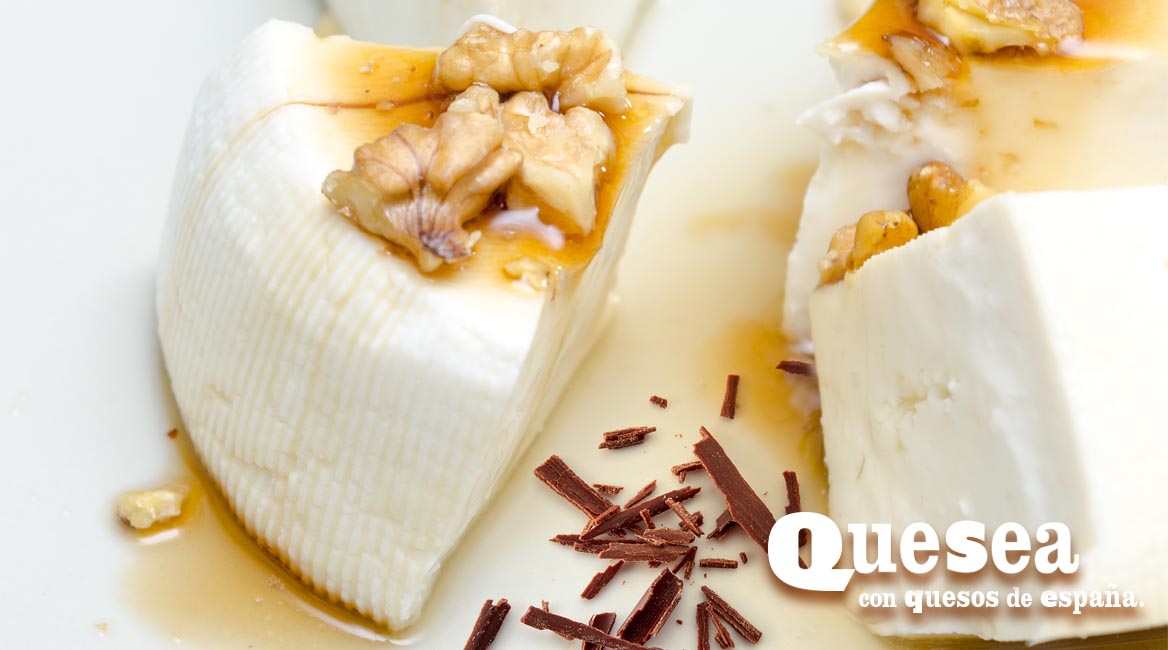
Surely not everyone thinks of chocolate as an ideal accompaniment to cheese.
We encourage you to try this explosive mixture, grating some dark chocolate on top of a board with your favourite cheeses.
Not only will it be an explosion of flavour on your palate, but it will also give you a whole load of energy. Do you dare?
Quesea with smoked salmon
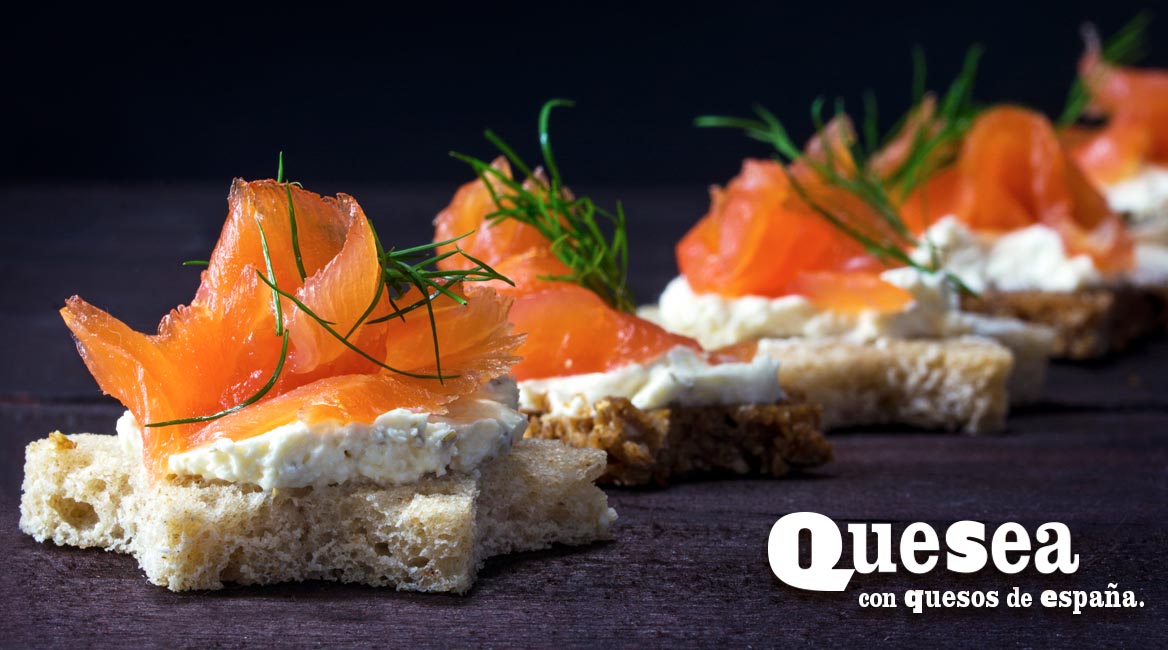
This tasty fish tastes best with creamy, mild cheeses.
As an appetizer or as a main dish, salmon and cheese are two symbiotic products that are a must in any tapas bar or pinchos bar in Spain, or in a top restaurant. At home, it is one of the simplest and most satisfying alternatives to a salad, and a refreshing dish during the heat of the summer months.
Also as a starter on very special occasions, such as the Christmas festivities, for the whole family to enjoy.
Quesea with jam
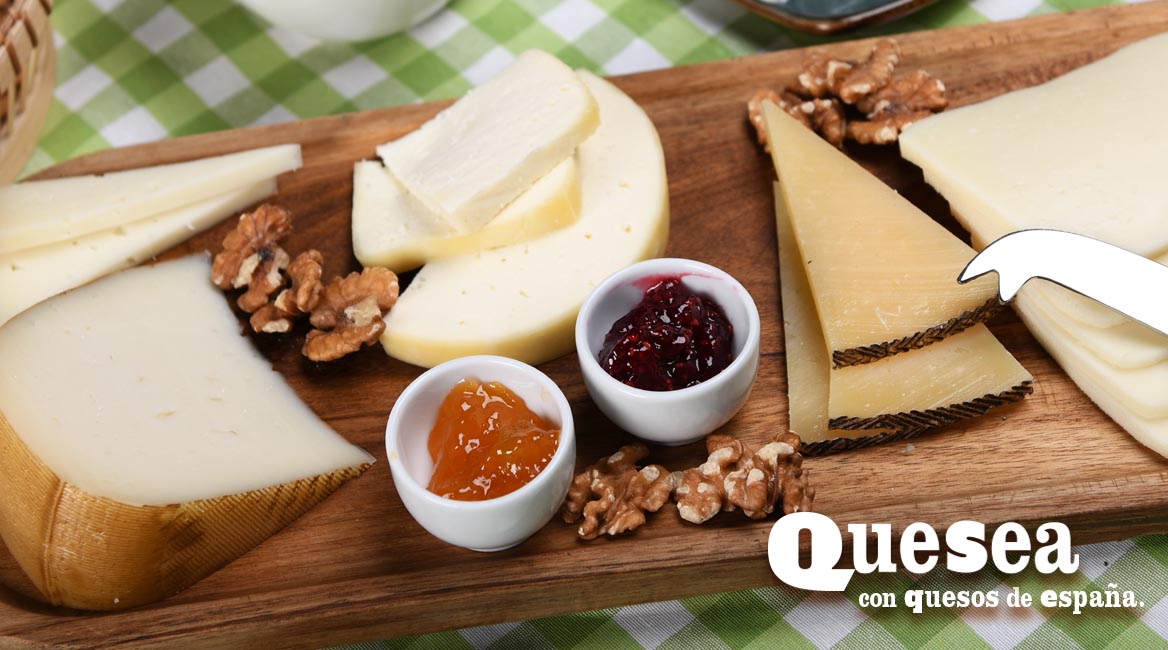
Goat’s cheese is a real treat for the palate with honey or fruity jams.
The sweetness of the honey and jams and the salty touch of the cheese are an explosion for your taste buds. An alternative for those with a sweet tooth.
Whether in main courses, starters or desserts, these combinations are very easy to prepare and enjoy in good company.
Quesea with raw vegetables
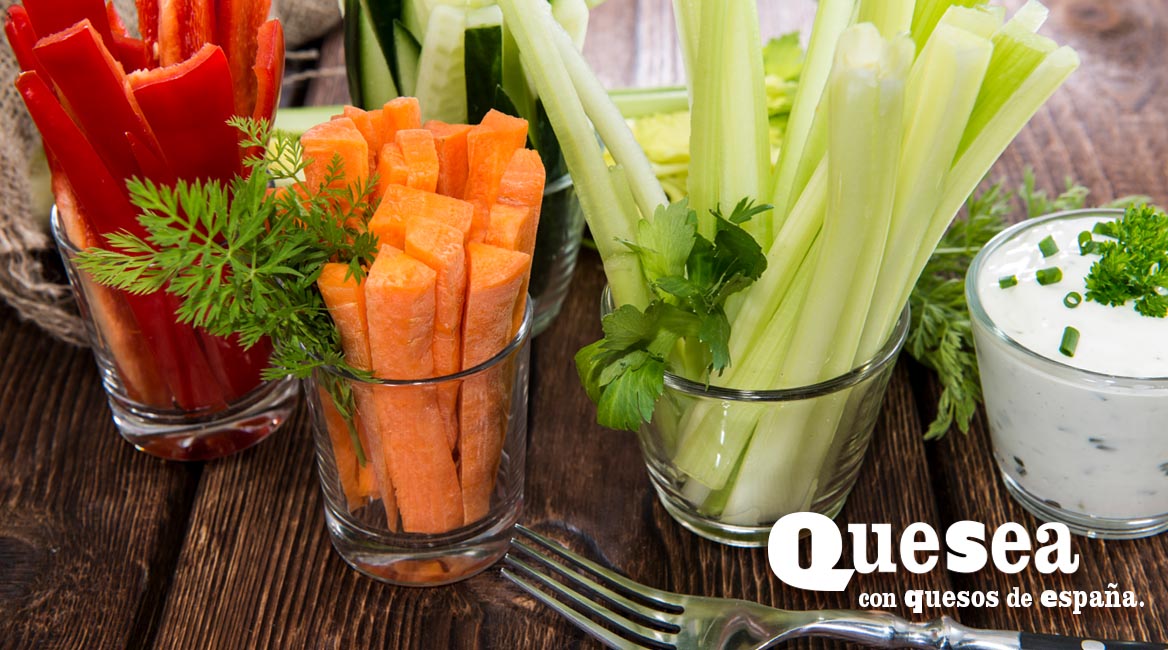
Can you imagine a good selection of raw vegetables cut into sticks, such as carrots, gherkins or celery, accompanied by a spreadable or fresh cheese? If you haven’t tried it, it’s a tasty, nutritious and healthy combination.
Vegetables are always a safe bet, even in sautéed, fried or grilled dishes, with some of the fabulous cheeses provided by the cheesemaking industries throughout the Iberian Peninsula and island territories.
Quesea with nuts and dried fruit
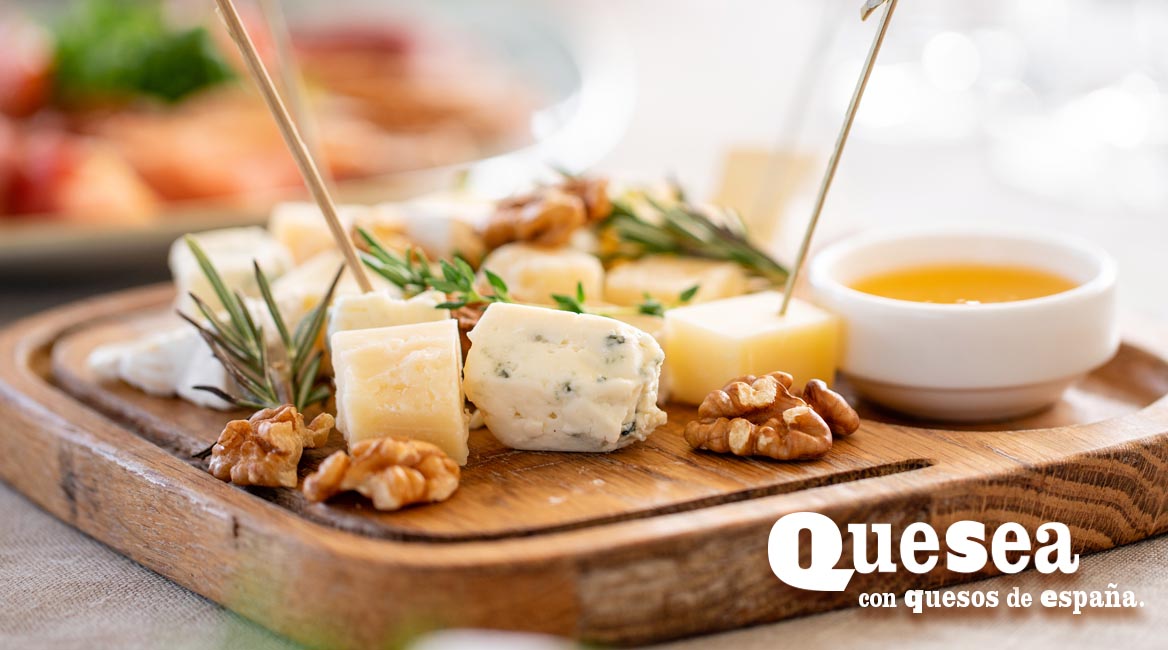
Nuts are another of the ‘classics’ when it comes to the best foods to eat with cheese. Pistachios, walnuts or almonds go very well with cured cheeses and chestnuts with soft cheeses and the increasingly popular goat log cheese.
In any case, don’t forget to include nuts -they also have a satiating effect and are cardioprotective– when preparing a cheese board and also add some dried fruit such as sultanas, prunes or apricot dried apricots. Finger-licking good!
Quesea in salads, pizzas and pastas
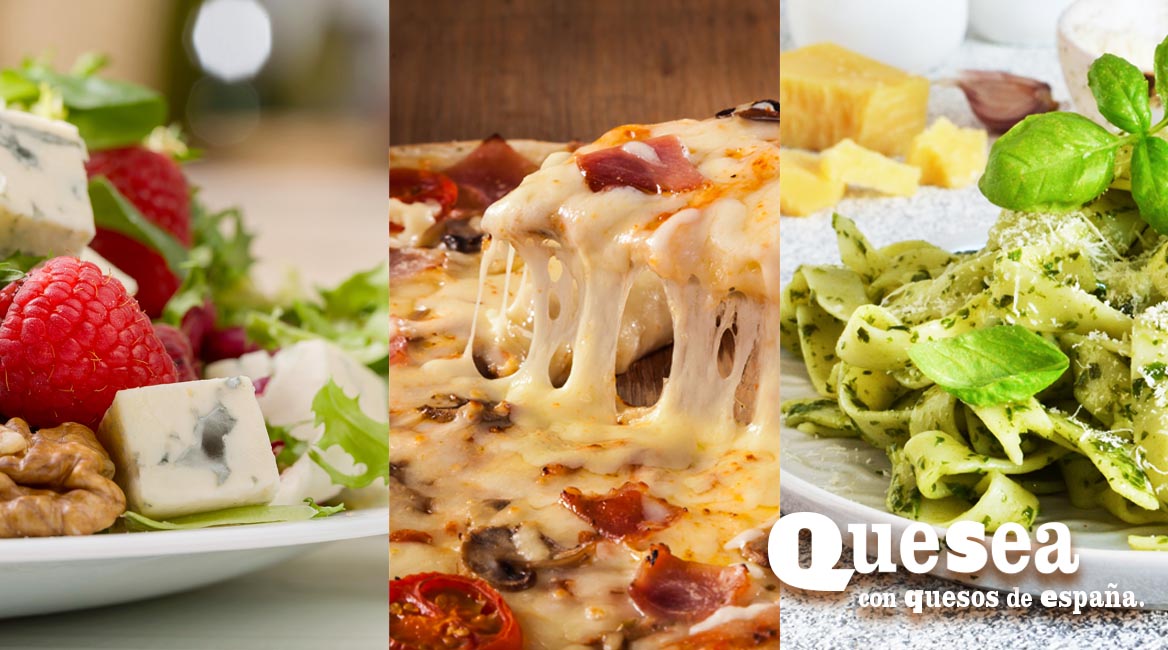
Fresh cheeses with a soft texture, such as fresh cheese of the Burgos type, are ideal for adding to salads. We can also brighten up salads with semi-cured cheeses combined with fruit. If we like our cheeses a little more intense, goat’s cheese in a salad with figs is a guaranteed success.
Similarly, a cured goat’s cheese or cured Manchego are ideal with pasta. And blue cheeses melt well and, consequently, if we add them to pizza, we will give it a different touch.
If we mix your favourite cheese with butter or cream, we will obtain an unbeatable sauce to accompany meat, pasta or vegetable dishes. Remember that cheese will be one of your great allies in your kitchen, with a thousand and one varieties to surrender to its explosive flavour.
Quesea for dessert
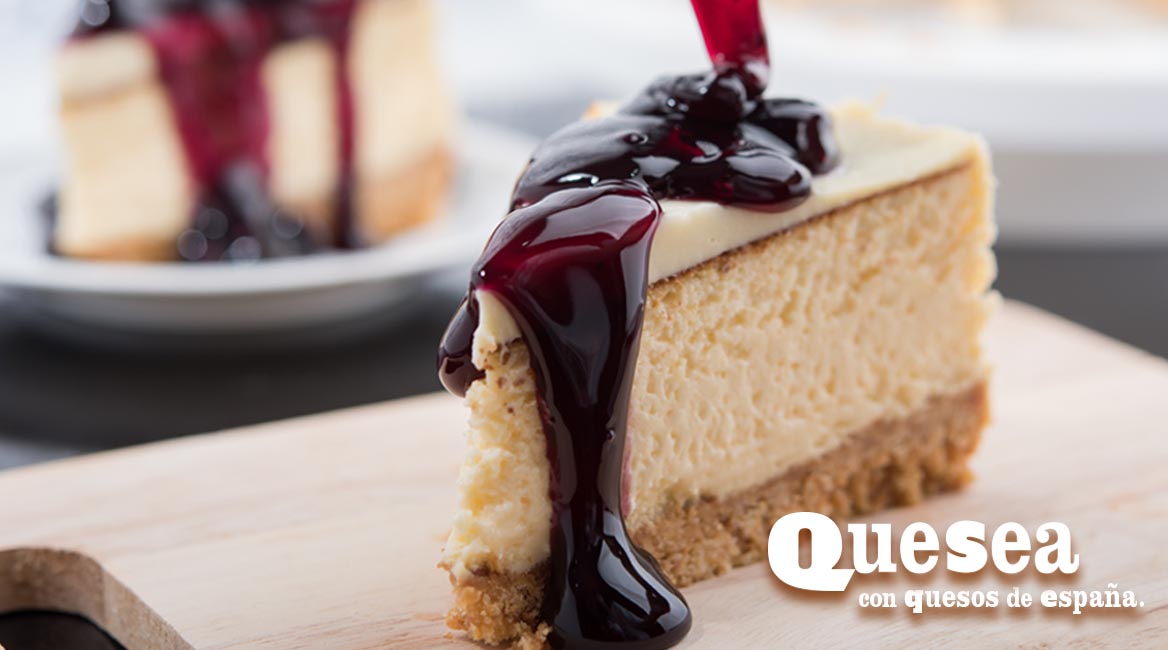
Cheesecake is one of the most popular desserts in restaurants all over the world.
There is no better way to end a perfect menu than with this never disappointing alternative.
But don’t forget that cheese forms part of countless other gastronomic preparations, and innumerable desserts and cakes, especially when accompanied by fruit or citrus fruits.
More and more consumers are discovering ‘cheese boards’ for dessert, a very widespread form of cheese in Europe.
